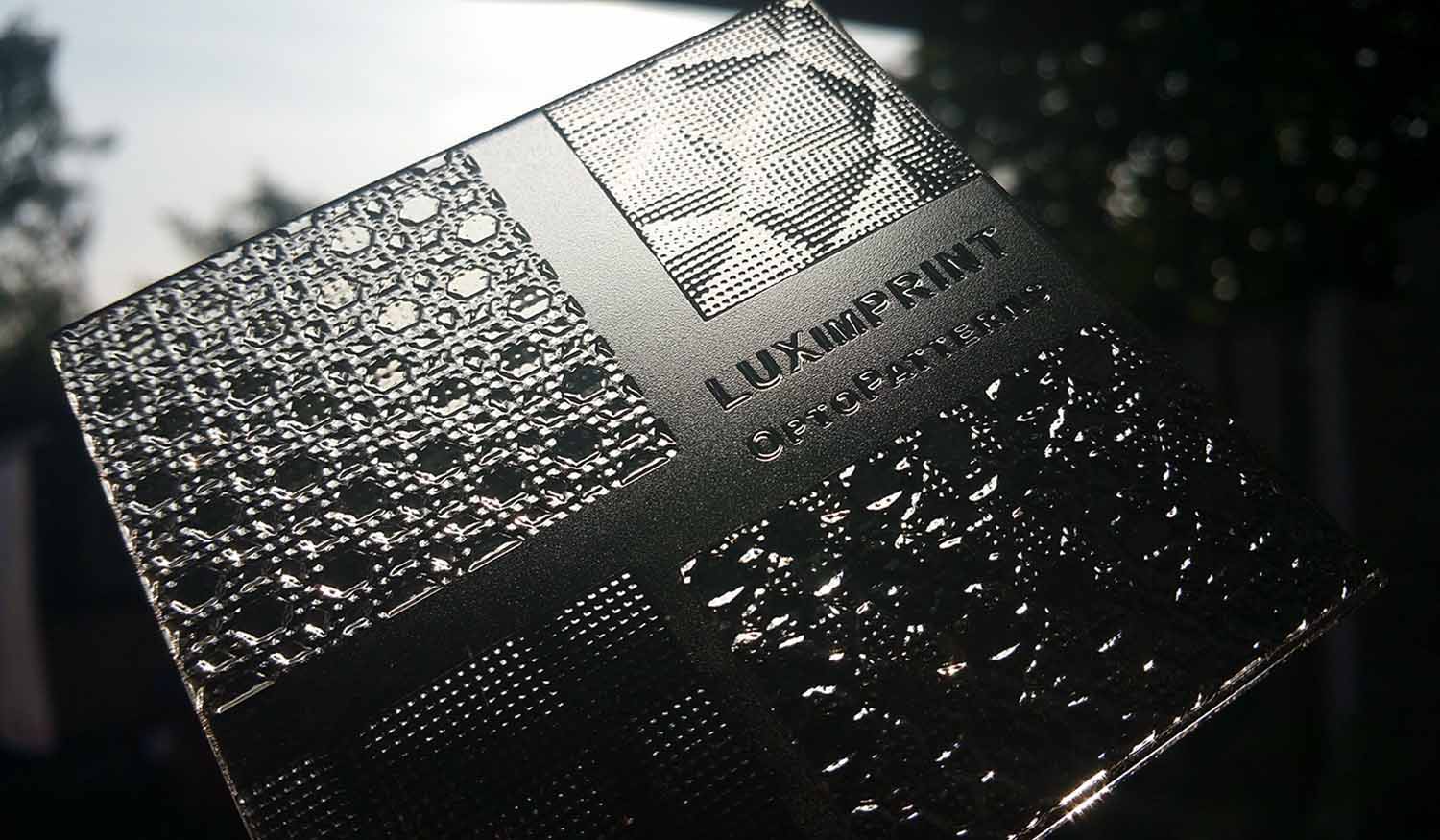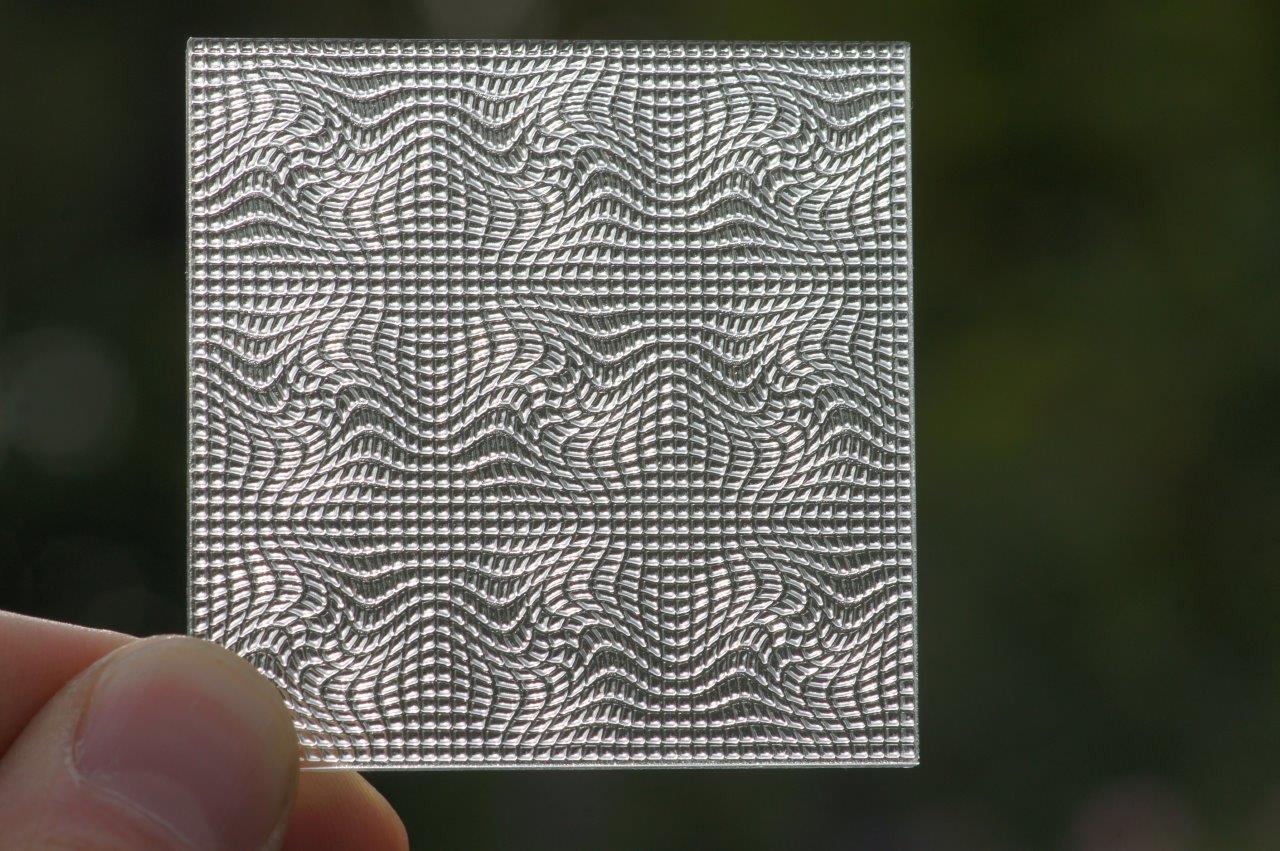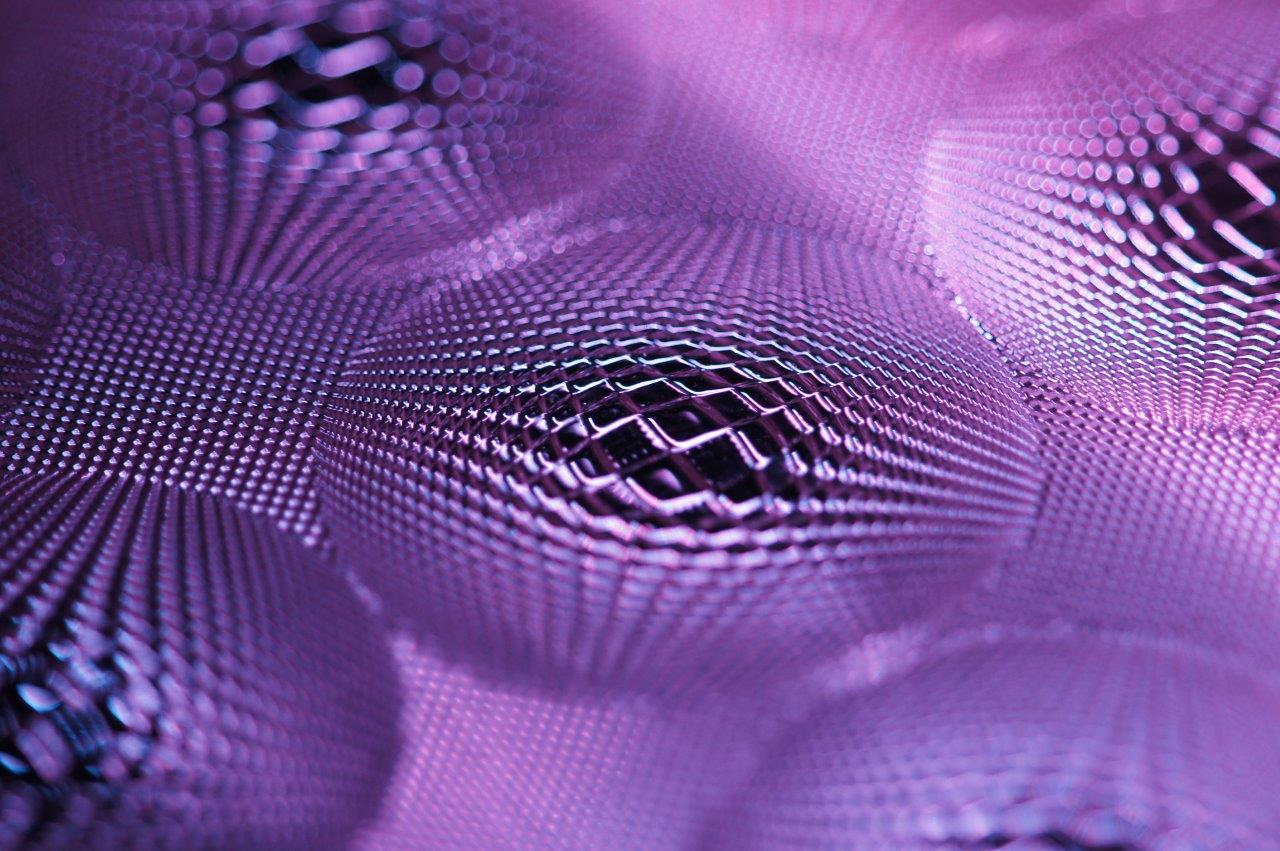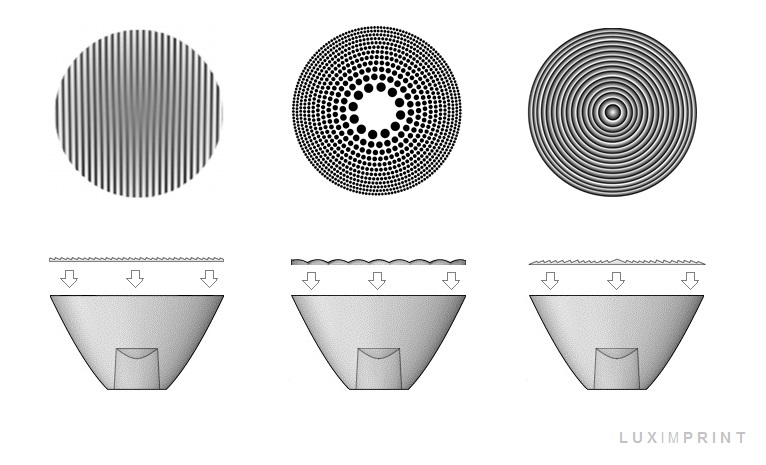Large Format Optical Textures and Light Guides
We are delighted to announce the availability of large format, 3D printed optical light guiding plates and textures. Whereas the availability of the services on its own is not new, recent technology optimizations have taken the feasibility and versatility of manufacturing for large format optics in particular to the next level, making it worth putting its availability in the spotlight again.
Challenges in Traditional Fabrication
When it comes to the fabrication of custom optics, especially in large format, conventional fabrication methods have only limited time – and budget-consuming approaches to offer. Often, subtractive turning processes, such as milling and turning, are at the core of nearly any manufacturing process out there. No matter it relates to the direct fabrication of optical parts in small quantities, or to shaping the manufacturing tooling as required for large volumes, the primary ways of making are through subtractive approaches.
Having one-offs fabricated for event display, demonstration purposes, design or tooling validation, therefore, are a typical blow in the engineering budget these days. Unless a direct commitment to soft or direct hard tooling investment is provided with all risky investment challenges involved. This cuts down engineering flexibility and asks companies to take significant upfront investment risks, commit to minimum order quantities, and follow time-consuming approaches.
3D Printing Large-Format Optics
The flexibility novel additive processes can offer, on the contrary, help to speed up manufacture, increase flexibility and reduce and/or delay the initial tooling investments. As soon as the initial prototypes are available and validated, one can switch in a confident way to the next phase including investment in high-volume tooling, if applicable, or just stick to the additive process to have small quantities produced. But not before the design and functionality of the parts to fabricate are validated by internal or external stakeholders.
Printed Optics Methodologies
Luximprint ‘Printoptical Technology’ enables the highly precise deposition of micro-scale droplets on any given optical substrate. The substrate can be rather small, or a sheet-like carrier, with size nearing one SQM. By giving the droplets some time to flow before they get finally cured, smooth optical features can are generated straight from the process. This eliminates the need for post-processing, such as polishing or grinding. Instead of optically smooth surfaces, randomly ‘frosted’ or heavily ‘textured’ surfaces can be generated too, or just a combination of both.
Sheets of optical plastics, such as acrylics, are commonly used as a carrier for the structures, but the Luximprint optical 3D printing platforms can handle glass-based substrates too, as well as a variety of clear and non-translucent custom substrates. Interestingly, the process can be utilized to rework existing ‘off-the-shelf’ sheet and lens materials, optimize and test them before re-tooling.
Application areas
Large format optics are typically used in a broad range of functional and decorative applications. The sheets with printed optics find their way in 3D television, holography, display items, advertising displays, signage, general lighting applications, build architecture, HUD devices, among multiple others.
Companies in search for fast, flexible and cost-effective optics solutions are encouraged to contact us to discuss their next projects. With typical lead times of 5-10 business days and global delivery with local support, rapid availability of custom optics is guaranteed. Curious how our optical textures look like? Please contact one of our global sales representatives or have a sample ordered via our sample shop.
You can find more inspiration at the optical Textures and Patterns pages.
Read the full press release in our press archive, or contact us directly.

























